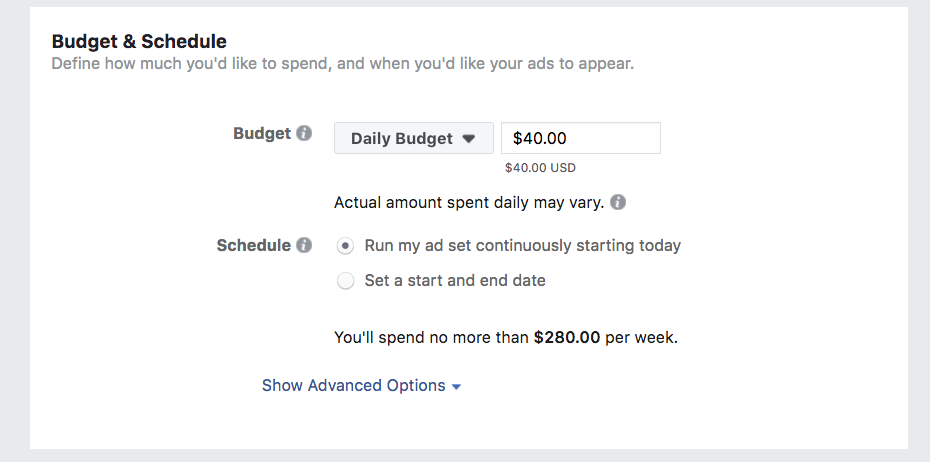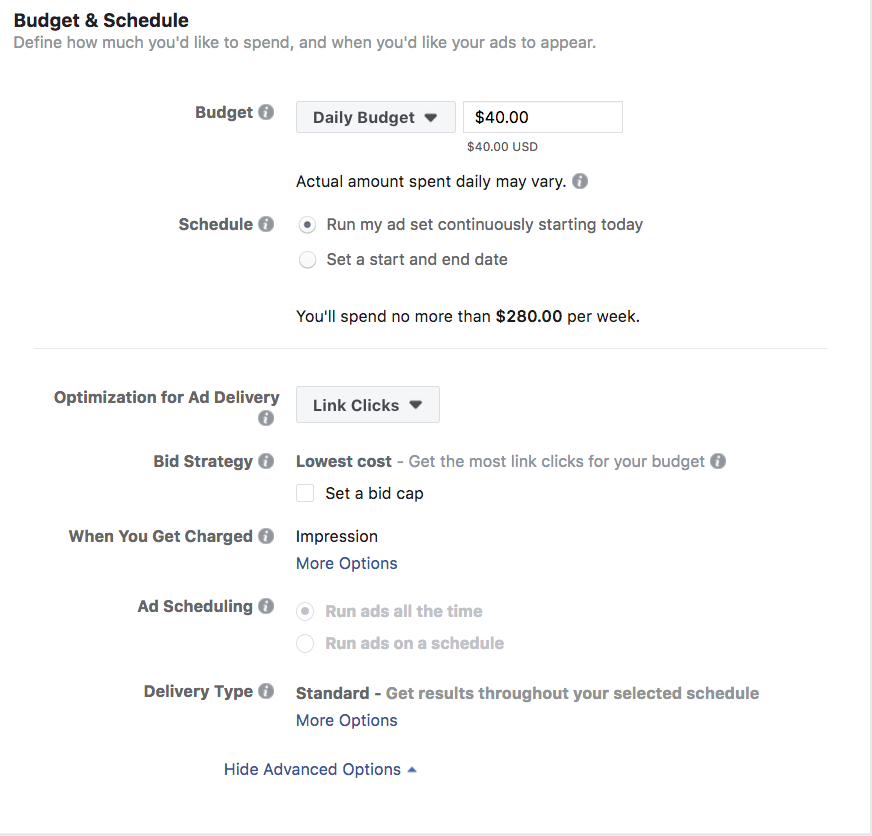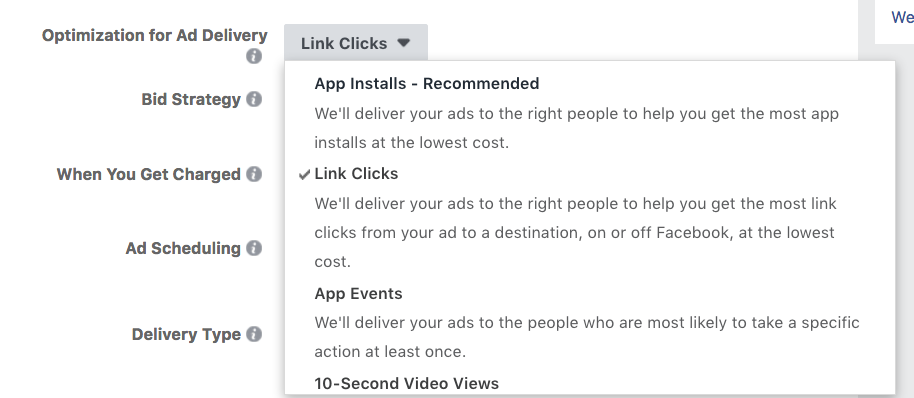In my experience working with clients, I’ve found that they typically struggle most with two different aspects of the Facebook Ads system itself: targeting and bidding.
Targeting at least stays relatively consistent year after year (barring the partner categories shutdown that’s happening now). The bidding interface has changed radically, with updates to the interface happening around once a year or so.
It’s not surprising that most people are confused by the bidding system. There’s a lot of options, and when you’re getting started, it can be difficult to figure out which is the right one for you. Even things that seem relatively straightforward can backfire a bit.
I want to clear up some of the confusion, so this Facebook Ads bidding Q&A will cover all the basics and answer the questions I hear most from clients and readers alike.
How Does Facebook Ads Bidding Work?
If the whole premise confuses you a bit, you’re not alone. Fortunately, it is relatively straightforward when it’s explained correctly.
Facebook Ads is one giant auction. Marketers place bids on what they’re willing to spend for certain results (like link clicks, impressions, or app installs). Based on advertisers’ bids and several other factors, Facebook will distribute ads.
You’ll never spend more than what you have to. If you bid $10 per click but you only have to pay $3.59 to beat your competition’s $3.58 click, that’s all you’ll pay for that placement.
Where Can I Customize My Bid?
This is an excellent question, especially since Facebook has the manual bidding options tucked away under a “Show Advanced Options” tag that’s easy to overlook.

You’ll set your bid and any manual bidding customizations under the Budget & Scheduling tab. The way Facebook has it set up, users can set a daily or lifetime budget, and then choose whether or not to schedule their ads. They’ll then give you as many relevant placements as possible, whether that’s spread out through the scheduled time or as they come up if you haven’t scheduled them.
In order to actually make specific bids or choose what you’re bidding on, you need to click that “Show Advanced Options” menu. When you do, this is what you’ll see:

What Are My Facebook Ads Bidding Options?
Alright, let’s take another look at this image again:

You’ll see that you have several different options. These include:
- Optimization for ad delivery. This tells Facebook what specific actions you want users to take, and they’ll take that into account when choosing who sees your ad. Examples include link clicks, app installs, 10 second video views, and more.
- Bid strategy. This tells Facebook exactly what strategy you want to implement with bidding, and how you want your bid money to be allocated. Not all strategies are available for all objectives. Strategies include:
- Lowest cost, which prioritizes getting the most results for your budget. This strategy allows you to set a bid cap, which doesn’t allow Facebook to spend more on a placement than what you’ve set.
- Target cost, which gives you more cost stability but may be less cost efficient. It allows you to say “I want to keep costs around $2 per click,” so Facebook will make sure that the average cost is $2 per click, with some individual clicks potentially costing much more.
- Choosing when you get charged. What’s available will depend on your ad objective, but this allows you to decide what actions you’ll pay for. Examples include impressions or link clicks.
How Do I Know What I Should Optimize For?
Optimize for the actions that you want. Facebook does, after all, take this choice into account when choosing which users to show your ad to. They do try to show your ads to users most likely to take your desired action.
Facebook can help with this; they’ll automatically recommend the optimization they think you should choose.

Aside from that, you need to do some testing. A/B testing is the only true answer to most Facebook Ads questions, and this is no different. You may find that you have a lower CPC but higher CTRs on impressions instead of link clicks, even if you’ve optimized for the latter.
I Know Exactly What a Lead is Worth to Me. Should I Set a Bid Cap?
You absolutely can. If you know that you don’t want to spend more than $1 per click on each click (instead of an average of $1), go ahead and set that bid cap.

As a precaution: if your bid is too low, even by just a few cents, it will significantly limit placement potential. Keep an eye on your campaigns to make sure you’re still getting lots of placements, which can be measured by impressions.
But here’s the thing. Before you set a bid cap, make sure that you really know what a lead is worth to you. Let’s take a look at what that means…
So I Should Set Bid Caps on What a Sale Would Cost Me, Right?
Not necessarily. While it is a factor to keep in mind, thinking this way can limit you from seeing the big picture.
How many of your customers that come from Facebook only purchase once? How many purchase a second time, or a third time, or even three times a year for two years?
I first discovered Tieks shoes through Facebook Ads, for example. I loved the way they looked, and the post had great UGC. After doing some research, I took the plunge and paid the $175 for a single pair of burgundy flats.

That’s an excellent sale for Tieks. But then what came after is even better for them. I told my sister, who bought a pair. I told my friend, who bought two pairs. And I myself now own four pairs of these ridiculously-expensive-but-worth-every-penny shoes. They are now the only shoes I wear except when working out.
Considering the fact that they likely only paid no more than two or three dollars for my click at the absolute most, I’d say they’ve got a pretty great ROI going from me.
Remember to take your average customer value into consideration when looking at what you’re willing to spend, or you might be shooting yourself in the foot.
Why Shouldn’t I Just Set a Bid Cap Every Time?
Sometimes, the average bid limit actually helps you, even though you might technically spend more than your bid on some placements.
A lower cost placement for audience network, for example, can balance out a more expensive but still qualifiable lead on Instagram. If you have a total budget and average bid, sometimes letting Facebook do the hard work for you does pay off.
What Are the Ad Delivery Options At the Bottom? Does This Have to Do With Bidding?
Towards the bottom of the manual bidding selection, you’ll see two different delivery options: Standard and Accelerated.

Standard delivery on Facebook Ads will try to pace your ad delivery. If your campaign has start and end dates, they’ll distribute the ad budget relatively evenly. If you don’t, they’ll still pace delivery to make your campaigns last as long as possible.
Accelerated delivery is the right now answer to Facebook Ads. It focuses on delivering your ads as quickly as possible. While you do need to set a bid cap in order to choose this option, you may find yourself still spending more, as it rushes delivery and may require you to bid the full $2 per click instead of a lower $1.50 cost that would be available other times.
Why Isn’t It Letting Me Choose Accelerated Delivery?
Accelerated delivery is only available if you’ve set a bid cap. This ensures that they won’t blow through your budget to get placements you can’t afford.

Do I Need to Choose the Same Bidding Option For Every Campaign?
No! This is a beauty of creating individual campaigns and ad sets. All ads under the same ad set will have the same bidding options, but you can otherwise choose different bidding options– including different actual bids and action optimization– for each campaign and ad set you create.
Is There Anything Else I Should Keep in Mind?
My last piece of advice is one that I want business owners to take seriously– especially small business owners with tighter marketing budgets.
Facebook Ads is an investment, and as we all know, it can yield outstanding results.
That being said, never spend more than you can actually afford to spend. If that $100 you just spent somehow doesn’t yield a single viable lead, will that put you out of business? If so, don’t spend it.
While it’s an investment, after all, it can also be a risk. Suddenly fluctuating algorithms do happen, and I’ve even run campaigns that had poor results or skyrocketing CPAs with no warning. Only spend what you can comfortably afford to lose, especially while learning the system.
Final Thoughts
Facebook Ads bidding can be a little complicated, and the number of different options typically stays a little confusing because Facebook keeps updating the interface (and your choices) about once a year. Right now, this Q&A should help you understand what those choices are, and which are right for your individual campaigns.
What do you think? Do you have any bidding questions I didn’t answer? Which strategies do you use? Share your thoughts and questions in the comments below!



1 comments On Facebook Ads Bidding Q&A: All Your Questions Answered
Pingback: Facebook Ads Bidding Q&A: All Your Questions Answered – Just Internet Marketing ()
Comments are closed.